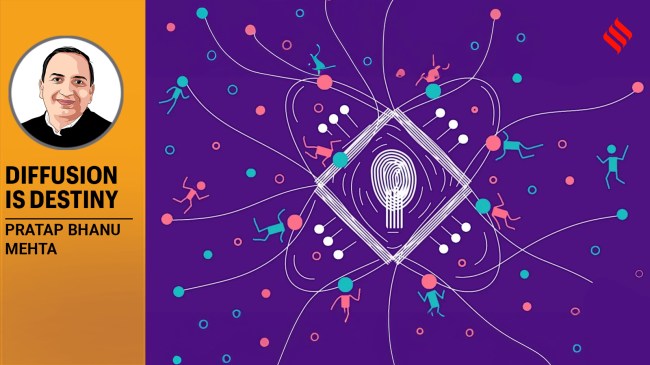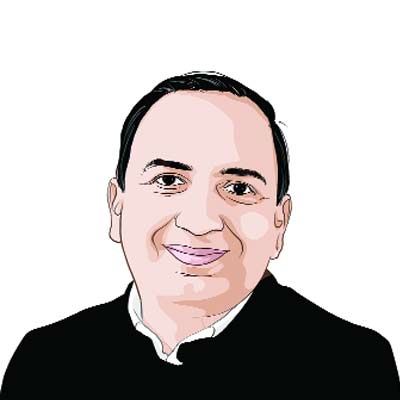Opinion Pratap Bhanu Mehta writes: How technology affects balance of power — and the lesson for India
If you want to be a technology leader, you should focus less on getting dominance in specific sectors and more on broad-based policies that allow for the diffusion of General Purpose Technologies
 Institutions oriented towards creating innovations or cornering profits in leading sectors are often very different in kind from institutions that allow for the diffusion of GPTs across a whole range of applications. (Source: File)
Institutions oriented towards creating innovations or cornering profits in leading sectors are often very different in kind from institutions that allow for the diffusion of GPTs across a whole range of applications. (Source: File) Transitions in the balance of power in the international system are often driven by technology. Technology is at the core of the current great power competition between China and the United States. But how does technology affect the balance of power? This question is not as straightforward as it seems. Jeffrey Ding’s much-discussed book Technology and the Rise of Great Powers (Princeton University Press) is upending a lot of conventional wisdom.
The conventional wisdom goes something like this. Countries gain advantage by getting ahead in what are known as the leading sectors. They innovate, acquire the lead-in, and then, for a brief period, accrue first-mover advantage or monopoly rents from their dominance in leading technologies. So, during the Industrial Revolution, Britain acquired a leading edge in critical innovations in industries like textiles. During the Second Industrial Revolution, when Germany challenged Britain, it did so by acquiring an edge in what then became the leading sectors, like the chemical industry.
In the late 1970s, many people thought Japan would give the US a run for its money based on the fact that it dominated industries like consumer electronics and cars. And currently, followers of technology competition also watch dominance in leading sectors. Will China gain an irrevocable lead in electric cars, for example?
Ding argues that this focus on leading sectors as an explanation for shifts in global power balances is mistaken. Great power status is not achieved by dominance of a leading sector. It is, instead, achieved by the diffusion of what he calls General Purpose Technologies (GPT). It is a cliché to say not all technologies are created equal. But the specific distinction that drives Ding’s argument is between General Purpose Technologies and Leading Sector Technologies. The former technologies are, as the name implies, innovations that alter economic activity by driving productivity gains across a large number of sectors.
So, in the first Industrial Revolution, Britain’s advantage did not come from textiles; it came from its ability to produce and diffuse iron-based machines across a large number of sectors. A contemporary example might be that AI is a technology that can potentially be adopted across a large number of sectors, leading to productivity gains across the economy. An advantage in, say, electric cars, might have some spillover effects, but does not transform a large number of sectors.
Using this distinction as a basis, Ding upends conventional economic history and geo-politics. Britain was successful in the first Industrial Revolution not because of a leading sector but due to the general diffusion of engineering and machining skills. In the second revolution, Germany was ahead in most leading sectors. But the US stole the thunder by being able to diffuse engineering skills and instituting standards that allowed general-purpose technologies like electricity to be adopted far more rapidly. In the Third Industrial Revolution, Japan seemingly had the advantage in some leading sectors like consumer electronics. But its ability to diffuse GPTs like computerisation was limited. The US, by contrast, did not rely on dominance in a few sectors, but greater diffusion of technology that could transform a number of sectors simultaneously.
Ding’s discussion of the distinction between these technologies is sophisticated and leads to testable predictions. But the central message is clear: If you want to be a technology leader, you should focus less on getting dominance in specific sectors and more on broad-based policies that allow for the diffusion of GPTs. Institutions oriented towards creating innovations or cornering profits in leading sectors are often very different in kind from institutions that allow for the diffusion of GPTs across a whole range of applications. The short version of Ding’s message is: Diffusion is Destiny.
But Ding’s larger point is that the mistake that economic historians make in focusing on Leading Sector Technologies is often mirrored by leaders and designers of industrial policy. These often seek to create a comparative advantage in a few sectors. And often the gains from these sectors last only as long as you can create some monopoly profits from these sectors, in part by denying the rise of others in these sectors. Leading sectors can bring gains to the economy in terms of exports or employment. But they are not a reliable basis for building national power.
This argument has deep implications, for development and geopolitics. For development, and for countries like India, the lesson is this: Even as we think of industrial policies for particular sectors, the basis of national power will have to be the diffusion of GPTs that enhance productivity across the economy and produce a range of accumulated improvements across complementary sectors. One of the reasons politicians are loathe to think of diffusion of GPTs is in part because it does not grab the headlines. But, in part, this is because diffusion of GPTs requires more systemic change. It requires not the skilling of human capital for specific leading sectors but widespread enhancement of human capital, institutional adaptability and facilitating interoperability of technologies. It requires consistent, widespread and foundational investments rather than the creation of technologies in mission mode.
For geopolitics, the implications of Ding’s argument are telling. He concedes that in terms of Leading Sectors analysis, China has done impressively well, in the production of electric cars, for example. But he thinks the US, unless Trump guts the entire system, may still have the edge in adoption of GPTs. The issue will not be who “invents” technologies like DeepSeek. It will be — who is able to diffuse these technologies widely.
This argument needs to be assessed at two levels. The first is at the level of the framework: Is the ability to diffuse technology a better foundation for power than leading sector innovations? The second is at the level of application of the argument. Is the ability of the US to diffuse GPTs still better than that of China, even though China might have the edge in some leading technologies?
Ding thinks the US still has the edge, and he tries to provide evidence for it, including in the diffusion of relevant engineering skills. But the lesson for India is clear. As Ding puts it, the spotlight should not be on the innovation clusters. It must focus on “small-sized firms, small towns, engineers who tweak, and channels that connect the technology frontier with the rest of the economy”. We need a widespread diffusion of human capital and deep institutional reform.
The writer is contributing editor, The Indian Express




